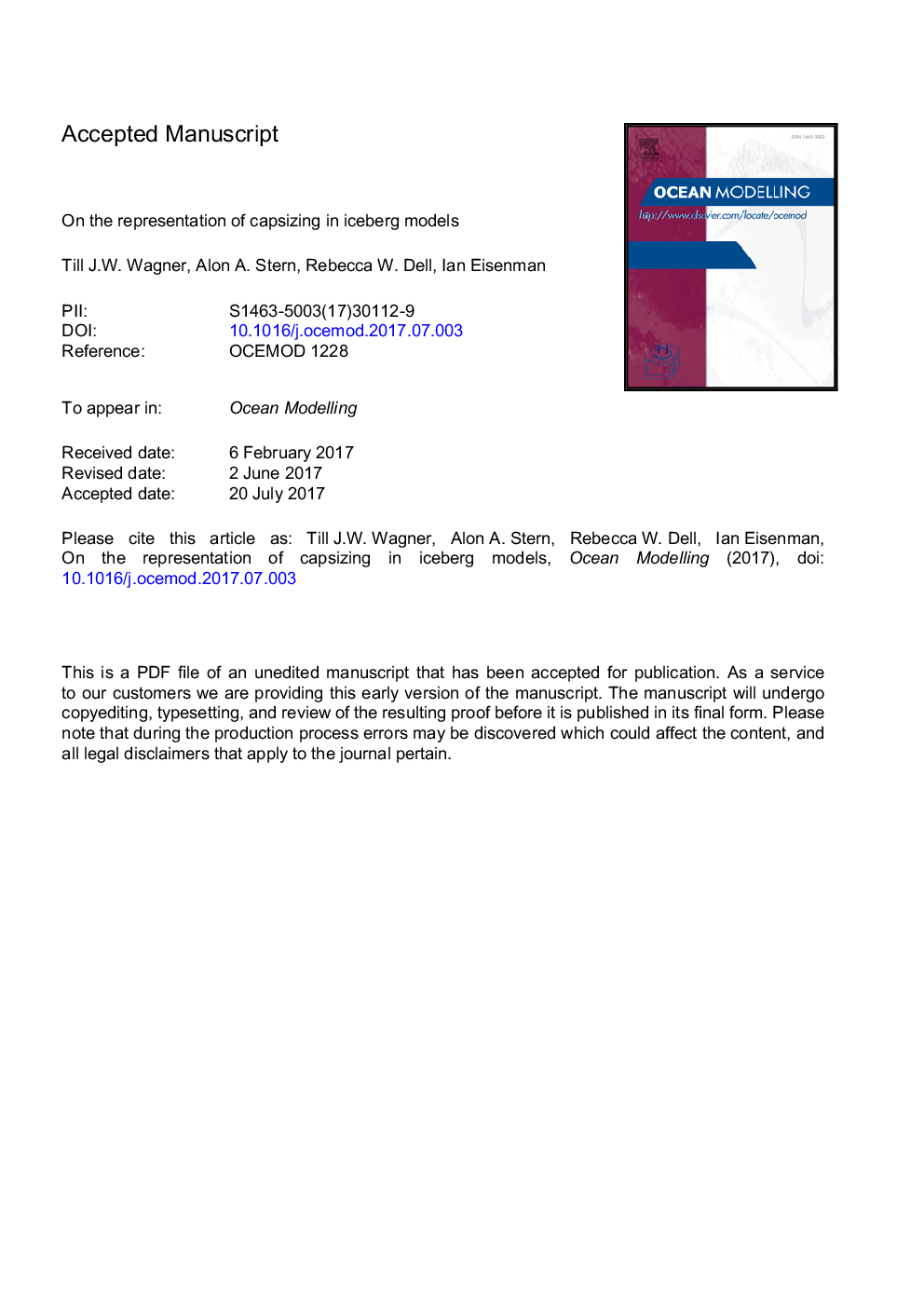| Article ID | Journal | Published Year | Pages | File Type |
|---|---|---|---|---|
| 5766351 | Ocean Modelling | 2017 | 35 Pages |
Abstract
Although iceberg models have been used for decades, they have received far more widespread attention in recent years, due in part to efforts to explicitly represent icebergs in climate models. This calls for increased scrutiny of all aspects of typical iceberg models. An important component of iceberg models is the representation of iceberg capsizing, or rolling. Rolling occurs spontaneously when the ratio of iceberg width to height falls below a critical threshold. Here we examine previously proposed representations of this threshold, and we find that there have been crucial flaws in the representation of rolling in many modeling studies to date. We correct these errors and identify an accurate model representation of iceberg rolling. Next, we assess how iceberg rolling influences simulation results in a hierarchy of models. Rolling is found to substantially prolong the lifespan of individual icebergs and allow them to drift farther offshore. However, rolling occurs only after large icebergs have lost most of their initial volume, and it thus has a relatively small impact on the large-scale freshwater distribution in comprehensive model simulations. The results suggest that accurate representations of iceberg rolling may be of particular importance for operational forecast models of iceberg drift, as well as for regional changes in high-resolution climate model simulations.
Related Topics
Physical Sciences and Engineering
Earth and Planetary Sciences
Atmospheric Science
Authors
Till J.W. Wagner, Alon A. Stern, Rebecca W. Dell, Ian Eisenman,
